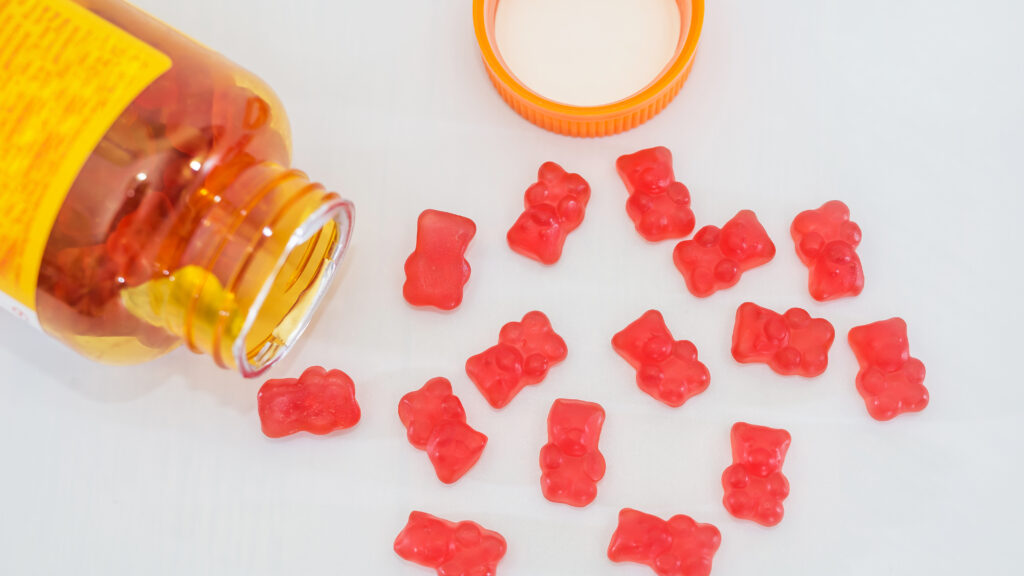WASHINGTON — M&Ms, Reese’s, gummy bears, and even cotton candy made an appearance at the Food and Drug Administration on the day before Halloween.
Commissioner Robert Califf was not throwing a costume party.
advertisement
Regulators were debating the potential benefits and pitfalls of “candy-like” nonprescription drug products such as gummies, particularly for children who often cannot, or do not want to, swallow actual pills.
The mood was more than a little morbid — though participants were at one point offered gummy teeth as a lunch snack from a dentist, who spoke passionately about the potential benefits of sedating kids for dental work with medicated gummy bears.
With that notable exception, most speakers at Monday’s meeting stressed the potential pitfalls of these products, like accidental overdose. Attendees heard, for example, about a 500% spike in pediatric overdoses between 1947 and 1954 after drug companies began marketing kid-friendly aspirin. Two public health officials also presented on the recent rise of emergency room visits for pediatric melatonin exposures.
advertisement
Several speakers emphasized that there are several, albeit less-fun ways to medicate kids who can’t swallow pills, ranging from intranasal to rectal administration. Some emphasized, too, that children should simply be taught to swallow pills.
“Why does it have to be candy-like?” asked Rachel Meyers, a clinical professor at Rutgers University. “I think we have to get away from this idea that all kids can’t swallow oral solids.”
It’s unclear what, if any, regulatory action will come out of the meeting. The agency appears to be in the very early stages of understanding how to regulate these products. An FDA announcement noted that “no clear definition of a candy-like drug product exists, and little research is available on consumer understanding of these products.”
Theresa Michele, who heads the FDA’s Office of Nonprescription Drugs and delivered closing remarks, did not promise any specific action from the FDA, but said she would “be taking all of this feedback back” to the agency.
There are also not great data on the size of the “candy-like” drug market, though one speaker from the United Kingdom highlighted how these products are increasingly being offered in new forms, including films that resemble Listerine breath strips and flying-saucer-like wafers that resemble the classic candy.
“All the new medicines are heavily inspired by this candy, sweets-like dosage form,” said Catherine Tuleu, a professor at University College London School of Pharmacy.
Participants made several suggestions on ways to lower candy-like products’ potential risks to kids.
One representative from the Centers for Disease Control and Prevention highlighted that agency’s recent efforts to improve child-resistant packages for drugs, including installing “flow restrictors” in medicine bottles, which would make it harder for children to quickly dump a number of pills into their hand.
Suzanne Doyon, who was representing the Connecticut Poison Control Center, suggested drugmakers should be more frequently using so-called unit dose packaging, such as blister packs, for these drugs – though she said she preferred drugmakers not make them at all.
One speaker even argued drugmakers should be barred from making their products in forms that resemble specific types of candies.
Jeffrey Worthington, the founder and president of a company focused on making “palatable drug products,” urged the FDA to eliminate products that are shaped like M&Ms, and to bar companies from using characters or other fun designs like “stars and diamonds” on packages.
“We’re trying to deliver a drug active [ingredient] in a safe and efficacious manner, and some of these forms are a means of delivery, not a means of delight,” he added.
Worthington was the only speaker who works directly in the pharmaceutical industry.
Another participant, Tuleu, the University College London professor, suggested that while candy-like drugs might be risky in pediatrics, they might benefit another form of medicine: veterinary medicine.
When asked if there were other patient populations that might benefit from candy-like drugs, Tuleu suggested they could be used “as treats for cats or dogs … or even … pellets for fish.”

